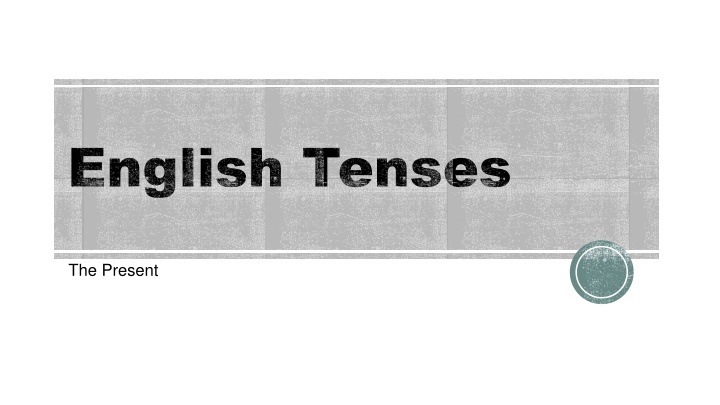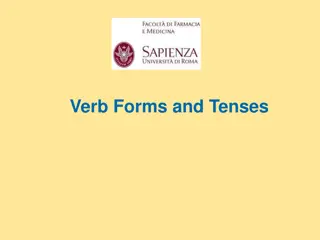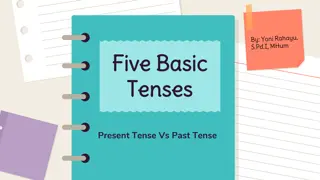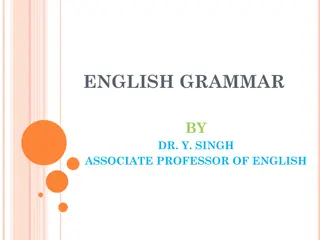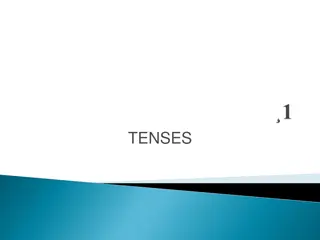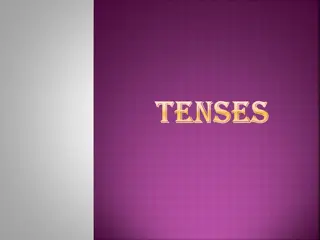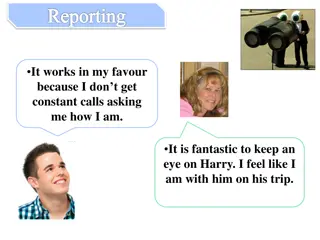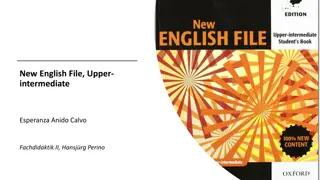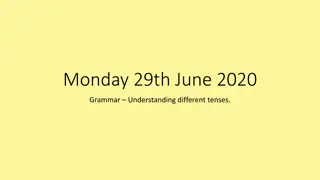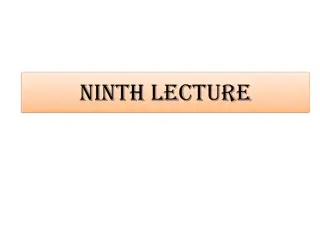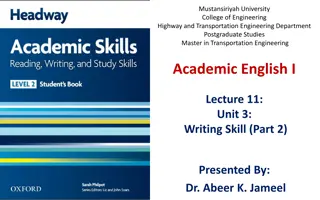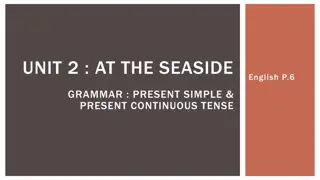English Tenses
The different present tenses in English - Present Simple, Present Continuous, Present Perfect, and Present Perfect Continuous. Each tense is explained with patterns, signal words, examples, and illustrations to enhance your comprehension of when and how to use each tense correctly.
Download Presentation

Please find below an Image/Link to download the presentation.
The content on the website is provided AS IS for your information and personal use only. It may not be sold, licensed, or shared on other websites without obtaining consent from the author.If you encounter any issues during the download, it is possible that the publisher has removed the file from their server.
You are allowed to download the files provided on this website for personal or commercial use, subject to the condition that they are used lawfully. All files are the property of their respective owners.
The content on the website is provided AS IS for your information and personal use only. It may not be sold, licensed, or shared on other websites without obtaining consent from the author.
E N D
Presentation Transcript
English Tenses The Present
Present Simple Simple present tense is the most commonly used tenses, showing facts, actions taking place one after another, action set by a timetable or schedule and action in the present taking place once, never or several times. Pattern Signal Words Affirmative Negative Question Does he work very hard in the company? Yes, he does. / No, he does not. always, every, never, normally, often, sometimes, usually, seldom Subject + Verb (present form) He always works very hard in the company. He does not work very hard in the company.
Present Continuous Present continuous tense mainly indicates action taking place in the moment of speaking. It could also be used for action taking place only for a limited period of time and those arranged for the future. Pattern Signal Words Affirmative Negative Question Subject + AM/IS/ARE + Verb - ing (continuous form) Is he playing computer games at the moment? Yes, he is. / No, he is not. at the moment, just now, now, right now, Listen!, Look! Look!He is talking with his classmates. He is not playing computer games now.
Present Perfect Present perfect tense puts emphasis on the result. It shows action that is still going on or stopped recently. Moreover, it also shows finished action that has influence on the present and has taken place once, never or several times before the moment of speaking. Pattern Signal Words Affirmative Negative Question Has he completed the arrangement for the coming event up to now? Yes, he has. / No, he has not. Subject + HAS/HAVE+ Verb III (past participle form) already, ever, just, never, not yet, so far, till now, up to now He has already finished his homework. He has not been to Australia so far.
Present Perfect Continuous Present perfect continuous tense is also used with action that recently stopped or is still going on and finished action that influence the present. However, compared with the above one, present perfect continuous tense pays more attention on the course or duration instead of the result. Pattern Signal Words Affirmative Negative Question Has he been playing the computer game all day? Yes, he has. / No, he has not. for the past 5 years, how long ?, the whole week, since xxxx He has not been speaking for the last 3 hours. Subject + HAS/HAVE + BEEN + Verb -ing (continuous form) He has been working here since 1996.
